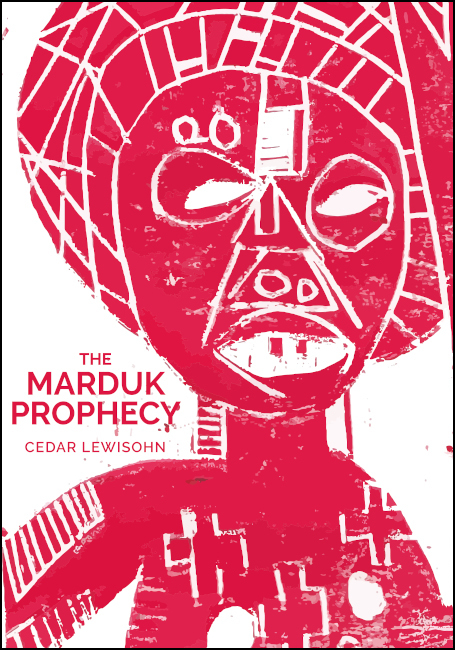Cedar Lewisohn’s new publication, The Marduk Prophecy, offers a unique art-driven narrative about criminality, colonialism, and the construction of Otherness through linocut Mesopotamian art.
Cedar Lewisohn is an artist, writer, and museum curator based in London. He has worked on projects with Tate Modern, The British Council, and Tate Britain. His writing has been published in The Guardian, and The Saatchi Gallary Magazine, among other publications. Lewisohn’s artwork features multi-colored lino block prints and is heavily influenced by Mesopotamian and ancient African artwork.
Published by Slimvolume Press, Lewisohn’s new work is named after an Assyrian propaganda document that dates back to 713 B.C.E. Although the original document may have been created for propaganda purposes, the wordless graphic novel offers an abstract observation of contemporary culture. From political issues surrounding knife crime to colonialism and the contested ownership of museum collections, Lewisohn examines issues surrounding the urban landscape of his hometown in London.
Lewisohn draws unique parallels between cultures, political issues, and contemporary concerns through the use of Mesopotamian and ancient African images. All images found in The Marduk Prophecy were sourced and inspired by objects found in museum collections such as those on display at the British Museum.
To find out more about Lewisohn’s work, you can check out his webpage here. Lewisohn has recently opened up his own line of clothing which features unique linocut artwork.
To purchase your own copy of The Marduk Prophecy check out the Slimvolume Press website.






Leave a reply